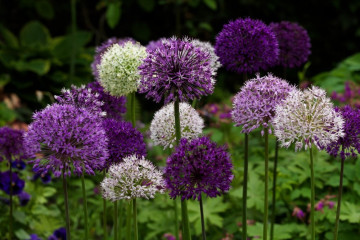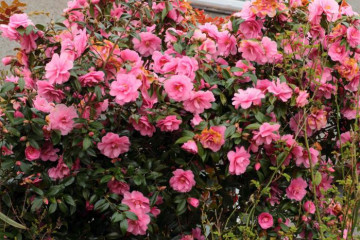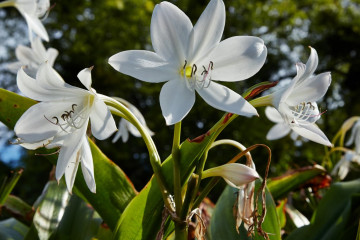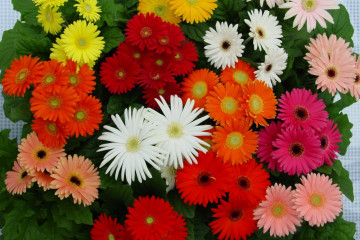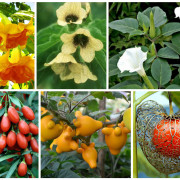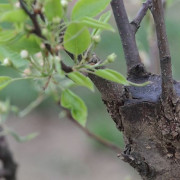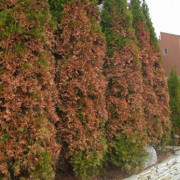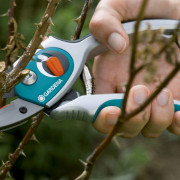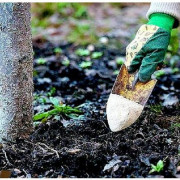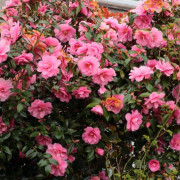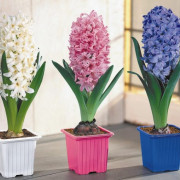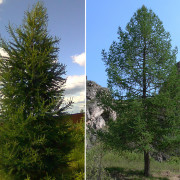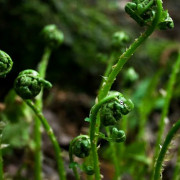Japanese spindle tree - planting and care in the open field
Content:
Euonymus (Eynomus in Latin) is a versatile plant. It is grown by conventional and container methods. A cute bush will truly adorn any space. But he will give pleasure only with proper care of the bush.
Description of euonymus
This is a whole class of plants with over 200 species. The habitat is the entire Eurasian continent. On the territory of Russia, the cultivation of 10% of varieties of mainly artisanal species has been mastered. But in nature there are also whole trees with a height of more than 3 m. Some of them are under the threat of extinction due to their inability to human activities.
Here is just a quick overview of some of the evergreen and deciduous varieties:
- European - a cold-resistant tree up to 6 m high. The species of this euonymus is a shrub. Resistant not only to frost, but also to drought with gas pollution in cities. In the garden culture of European countries, it forms a hedge. It is divided into several subspecies: weeping, dwarf, etc. They differ in the color of the leaves and the size of the bush. Small-leaved is available in expositions of botanical gardens around the world, including Nikitsky in Yalta;
- winged is found mainly in Southeast Asia. He took root in Russia, on Sakhalin. It got its name for the similarity of branches with wings. The plant is impressive in its size: a tree or shrub does not exceed 4 m in height. It has a high winter hardiness, however, in severe frosty winters, the tips of the branches freeze and require pruning in spring. It is unpretentious to the landing site, but prefers the most illuminated areas. Planting and caring for this variety of euonymus in the Urals is impossible;
- fortune. Until recently, the species was considered endemic. It grows in the south and northwest China. Fortune is markedly different from its fellows. It is winter-hardy, in nature the euonymus creeping in winter is covered with a ball of snow. Tolerates pruning and transportation well. Fortune Emerald Gold is one of the varieties of euonymus for planting and care in the regions of Siberia and the Urals.
The selection is completed by a variegated euonymus. His homeland is sunny Japan. Growing will be a pleasure and will not take long. It has taken root very well on the territory of Russia, especially in the Siberian region. Breeders have bred more than fifty varieties up to 7 m high. The plant feels great in the open field and in the room.
Some types of euonymus - creeping or variegated - are striking in their diversity. The patterns and shape of flowers are changing. The colors of the leaves are predominantly green and red.
Euonymus: planting and care on the site
Euonymus is a shrub that is not picky about planting conditions. For him, it is not the composition of the soil or the presence of shade that is important, but timely watering. It is necessary to plant a ground cover bush in cold weather. The optimal time for planting is mid spring with stable positive weather or early autumn. Then the roots of the plant will have time to get accustomed to the onset of night frosts.
Euonymus tolerates frost well, but is sensitive to waterlogging. He can get wet.
How to plant a mix of euonymus correctly:
- Measure the root length of the seedling.
- Make a hole twice as large.
- Fill the bottom of the pit with a drainage layer of broken brick or expanded clay.
- Cover part of the pit with fertilizers, humus or compost.
- Plant an euonymus bush. Compact the soil around the shallow plant.
- Water it.
Plant care
It is worth adhering to some nuances here.
- It is worth watering the plant abundantly, but infrequently. To retain moisture and protect the euonymus from overdrying, the earth must be tamped and mulched. Ideally, the signal for watering is a change in the behavior of the plant: it begins to wither, or cracks appear in the soil in the area of the bush.
- To prevent looseness of the bush and contact of branches with the ground, their tips need to be pinched. Without this, the access to the plant of pests and diseases transmitted from the soil surface is facilitated.
- For effective growth, the tree will need top dressing. It is applied twice a season: in the spring before the first flowering and in the fall after the last. Mineral natural fertilizers are used, but in the spring it is recommended to add organic compounds such as slurry.
- Along the way, with feeding, the shrub is treated with Bordeaux liquid. The remedy will protect it from the main diseases - powdery mildew and trunk rot. For reliability, the treatment is carried out in a course for a month: three sprays with an interval of 10 days in spring and autumn.
- Pruning is carried out in the winter before the buds appear. Ancient, broken branches or with signs of a disease are subject to unconditional removal. Competent pruning forms an elegant ornamental bush or tree.
- Leaves, peat, or stale sawdust are good winter mulches. Plants up to two years old need additional shelter.
With proper care, the bush will bloom repeatedly in one season. Cycles of active flowering and dormancy alternate at intervals of several weeks.
Reproduction basics
Euonymus reproduces well in several ways. First of all, these are seeds. Specialized agricultural stores offer a wide range of planting material for this crop. Many people buy them for the first time, and then collect them from their own bushes after the seed pods have ripened.
After collecting and removing the shell, they are treated with a weak solution of potassium permanganate and placed in the ground. If spring sowing is planned, then the seeds are additionally stratified and placed in a moist substrate. In this form, future seedlings are conveniently stored in the refrigerator for up to five months. This tactic brings results - friendly seedlings and strong seedlings. They are planted after the retreat of frost according to the scheme given above.
Cuttings
Also, the bush can be propagated by cuttings. For this, specimens not older than 5 years are suitable. Future cuttings are harvested in June-July with a maximum length of up to 8 cm. The lower edges of the cut are treated with root and hamair, and then placed in a closed fertile ground, mulched with grass. Then sprinkle with sand with a layer of up to 4 cm and leave alone for one and a half to two months. After that, they are planted in a permanent place.
You need to prepare for planting cuttings. The process takes 2 years. In the first year in spring, the garden bed is well worked with a shovel and spilled with a solution of boric acid according to the instructions. Then it must be covered with black plastic wrap until the weeds emerge. The procedure is repeated up to 4 times per season.
The next year, in the spring, the garden bed is dug up again, adding 50% thiodane or 5-7% karbofos and spilling it with a 10% boric acid solution prepared according to the instructions on the package.
Root offspring
Immediately after the snow melts, Japanese euonymus can be propagated by root suckers. The recommended length for such a procedure is 20-30 cm. This is the most simple, but pedantic scheme. The plant must be carefully dug up together with a lump and transferred to a prepared hole or container.
Japanese spindle tree: planting and care at home
This method is suitable for everyone who grows non-ground cover bushes of this culture in apartments. He will also help out those who grow non-winter-hardy varieties of euonymus in the Urals and Siberia.
- A planter or container is required. At the bottom, it is advisable to make drainage holes if they are not there initially.
- Then pour a layer of drainage - broken brick, expanded clay.
- Prepare a nutritious soil mixture, based on the proportions of 3 parts of sod land, 2 parts of peat and part of sand. Plant a plant from seedlings, a root process or a cutting into it. Drizzle.
Plant care consists of the same steps as for open ground. For irrigation, use settled water at room temperature. The frequency depends on the degree of drying of the earthy coma. In the hot summer months, watering is increased and the leaves are additionally sprayed from a spray bottle. For this period, it is better to put it in fresh air, for example, on the balcony. Also, once a week after watering, a complex top dressing for deciduous species is introduced.
Transfer after purchase
It should not be postponed. The culture needs solid soil, not an industrial depleted substrate. The transplant is performed according to a scheme similar to the classic landing from scratch. Next, you need to take care of him according to the usual instructions described above.
Preparing for winter
When going into a state of dormancy in the fall, preliminary pruning of old branches and crown formation are carried out. In no case should they be thrown away. It is important to correctly integrate them into the shelter along with the fallen leaves. It is better not to leave the last year's mulch, but transfer it to the compost, filling it with a new one. The thickness of the mulch layer should be a little more than 10 cm. Then it should be covered with three layers of non-woven material like agrofibre. The composition is completed by tying with twine and fixing with spruce branches. Good winter hardiness is ensured.
On this, the description of the outlandish culture came to an end. Those who have read the article now know everything about the main features of the life of this wonderful shrub: where the euonymus grows, how to plant it, especially after purchase, as well as leaving.





